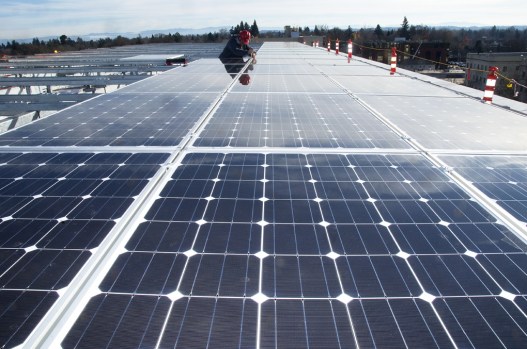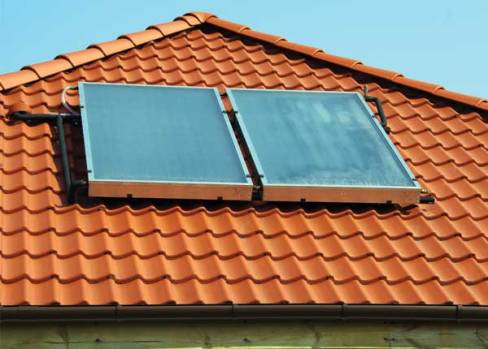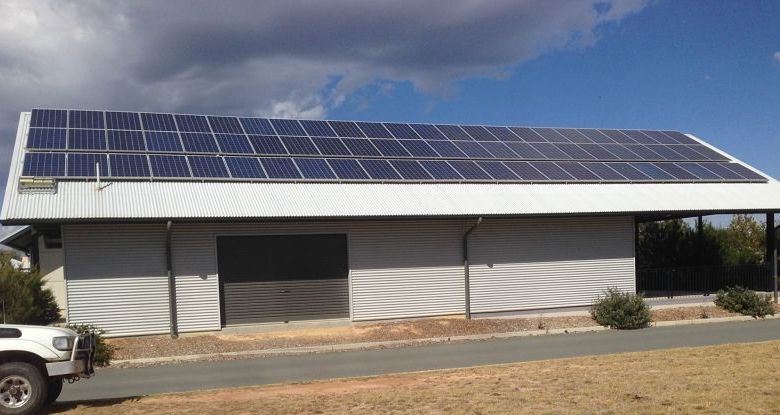
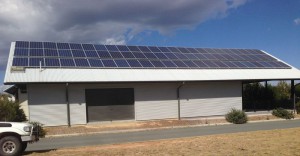
Alternative energy prices for councils are thankfully falling, but sales static for products like solar has reached a roar. Huon Hoogesteger cuts filtetrs out the glare to find the value sweet spot.
[This story first appeared in the August-September 2015 edition of Government News]
When Burdekin Shire Council Mayor Bill Lowis faced an unprecedented rise in the cost of Council electricity, he decided to issue a press release to explain just how challenging things had become: “These are tough times and these increasing costs don’t make it easy to keep our Budget numbers down. Electricity alone is budgeted to increase by approximately $235,000, across the board including water and sewerage. Our total budget for streetlights, including energy costs, is $515,000 for the coming year, which is almost a third of Council’s total expenditure of approximately $1.8 million on electricity.”
Lowis is not alone. Councils across Australia are facing ever rising electricity costs, which eat up budgets and mean money that could have been spent on meaningful community projects vanishes instead into keeping the lights on. It is no surprise that many are now looking into alternative energy as a way to save money. Luckily, while standard network electricity costs have skyrocketed, alternative power prices have dramatically come down in price.
Gone are the days that alternative energy was more expensive than conventional power, something a Council would consider only to polish its green credentials. In the past two years alone, solar panel prices have dropped by more than 40 per cent, resulting in “grid parity” for 80 per cent of the world’s countries. Grid parity, which means the cost of solar is the same or lower than what can be purchased from a standard, usually coal-fired, energy producer, has led to a shakeup in the Australian energy market. This shakeup, driven by competitiveness advances in other alternative energy sources, not just solar, has turned the electricity market on its head, as organisations and entire industries that had never considered other types of power are making the shift for purely economic reasons, as they seek to reduce spiralling costs.
The change has been truly stunning as industries as cost conscious as mining choose solar over traditionally cheap diesel to power remote sites. Councils across Australia are at different stages of this shift to alternative energy. Some, like Yarra in Victoria, have committed to an alternative energy strategy, scrutinising their energy use and determining best next steps. Most councils, however, are at a very early stage of the journey, and some remain completely unaware that this energy shift is even happening. Too many Council engineers have not kept up with the rapid advances. Unaware that times have changed, they don’t even raise the attractiveness of alternative energy to Council’s attention.
Cutting the Glare
But there is an even bigger issue facing Councils.
As alternative energy prices have come down, sales static has gone up. The market has been flooded with a range of operators, many of whom know practically nothing about alternative energy, but have arrived just in time for the revolution, hoping to cash in. These operators aren’t interested in understanding a Council’s true energy needs, they are only interested in selling what they want to sell. All too often, this means the buyer is left with an oversized energy solution, too big in all the wrong places, since there has been a failure to properly assess and understand the Council’s particular set of needs. In the face of this market uncertainty, even those Councils that understand that alternative energy offers a real solution to their electricity woes have held off on making the shift –a delay that is likely costing tens of millions of dollars per year across Australia.
Councils are also under pressure to ensure that they thoroughly investigate any opportunities involving Council assets and use of funds. Many Councils are recognizing that they must first get a sound overview of their energy health, their baseline and their needs, before simply adding on new electricity sources. However, what we are seeing is many Councils stuck in limbo. They want to lower their energy spend, but they don’t have the in-house resources to conduct this kind of analysis, and they have no idea where to start.
The challenge is about resources. No Council, let alone most organisations in Australia, will have the in-house expertise needed to thoroughly analyse how alternative energy can fit its needs. To do that you’d need to have knowledge in solar, wind, geothermal, cogeneration, battery storage, electricity billing practices, tariff and subsidy structures, and a strategic view on where all these components are going. But finding unbiased and independent expertise is extremely difficult since the vast majority of experts are wedded to the sales function. Sales people don’t do anything for free, and their kind of comprehensive and customised analysis will usually be biased toward making a sale which can lead to a poor and incomplete outcome.
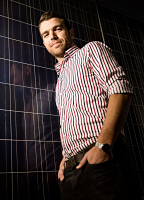
Palerang Council’s experience offers a promising way forward. Council was aware that alternative energy could increasingly provide significant cost savings and many other benefits. Palerang wanted to consider new ways of generating energy across several council-owned sites. Exploring the market, however, Council soon discovered a confusing array of choices, a lot of promises not backed up by data, fluctuating prices, contradictory opinions and no clear answers. Wind, solar, hydro or even geothermal? Was battery storage cost effective? There were too many questions, and not enough answers. Council decided to tender for an external assessor who could be trusted to provide these answers.
When we were fortunate to win the tender, we set to work applying a sophisticated analytics and a deep industry knowledge to make sure Palerang was provided with an energy outcome that would lower their cost while being future-proof and represent the best use of Council funds. Essentially we acted like an independent research arm for council, conducting a comprehensive analysis of Palerang’s energy needs and modeling an alternative energy solution custom-made for it. Our goal was to deliver data-driven knowledge that would equip Palerang Council with the insight and intelligence it needed to weigh all the options and achieve the best result.
Part of the challenge for Council is that for each Council site, we worked hard to understand the current and projected electricity demand profile, the current cost of electricity and the physical requirements. Where detailed 15-minute demand profiles were not available from the utility, data loggers were deployed to collect that information over a representative two- to four-week period.
This information was combined with knowledge of how potential wind, solar and hydro solutions would generate power in each of those locations, and how much power could be generated over what time periods and at what cost. Wind and geothermal solutions were quickly ruled out based on their relative costs leaving commercial solar as the best option.
Putting all that data together required expertise and the use of custom-made software which crunched the numbers and returned a detailed financial analysis for each site. This analysis projected internal rate of return, payback and cash flows out into the future for various sizes of commercial solar systems and different financing methods.
Independent Scrutiny
Combined with other solution requirements around ongoing accountability, guarantees, maintenance and reporting requirements, Palerang Council was able to make a fully informed decision around whether or not to proceed with a renewable energy solution on a site-by-site basis.
As Bill Ellison, Director Infrastructure Planning at Palerang Council said: “As a result of this clarity, Council adopted the staff’s recommendation to proceed to tender for nine of the ten sites.”
Many Councils are facing what Palerang faced, and it is critical that they understand that their needs will not be served by a one-size-fits all alternative energy solution. Even if a Council chooses not to go down the path of an independent review like Palerang’s, there are basic questions it should ask as it reviews its own energy picture: does the solution need to be expandable down the track; does Council want a turnkey solution; does it want project management or can it support this in house; does it want reporting and performance monitoring for whatever systems it installs to ensure it will not end up hemorrhaging power?
It is also important to know that many Councils can save tens of thousands of dollars almost immediately, and without installing alternative energy, by reviewing the way they use power. A technique called “load shifting,” where power is consumed when electricity prices are lower, can be extremely effective. For example, staggering when lights come on at a sport oval or changing water pump use can make a big difference in what Council pays.
If Council does decide to move into alternative energy without a strategic energy review, it is worth starting with sewage and water treatment facilities as a possible first target since costs associated with these can more readily be passed on to residents both cushioning the budget from a large CAPEX spend and providing immediate benefits in the form of reduced energy. It is also worth Council considering various alternative energy options that enable it to install an alternative energy system without upfront costs and pay for that system through lower energy prices over time. Landfills can also be a target area, offering both options for energy savings and carbon offsetting.
Must-Know Council Energy Facts
- Electricity prices are often now more than 30 per cent of a Council’s budget
- Solar panel prices have dropped by 40 per cent in the past two years
- Sewage and water treatment are usually easier for Councils to fund than other sites
- Even simple bill analysis without the addition of an alternative energy system can save a Council tens of thousands of dollars.
Huon Hoogesteger is the founder of Smart Commercial Solar, an energy provider and monitoring company, specialising in the advanced use of alternative energy analytics. www.smartcommercialsolar.com.au
Comment below to have your say on this story.
If you have a news story or tip-off, get in touch at editorial@governmentnews.com.au.
Sign up to the Government News newsletter

